3DDFA-V3——基于人脸分割几何信息指导下的三维人脸重建
1. 研究背景
从二维图像中重建三维人脸是计算机视觉研究的一项关键任务。在虚拟现实、医疗美容、计算机生成图像等领域中,研究人员通常依赖三维可变形模型(3DMM)进行人脸重建,以定位面部特征和捕捉表情。然而,现有的方法往往难以准确重建出如闭眼、歪嘴、皱眉等极端表情。
为了增强3DMM对极端表情的捕捉能力,3DDFA-V3从训练策略和数据策略两个角度进行研究,以人脸分割为研究切入点,使用人脸部件分割的几何信息作为监督信号,设计损失函数,显著加强了对形状的约束,同时,3DDFA-V3设计了可靠的表情生成方法,能够大批量、可控地生成难以获取的极端表情人脸图像。

图1 3DDFA_V3 利用面部部件分割的几何指导进行人脸重建,提高了重建面部特征与原始图像的对齐精度,并在捕捉极端表情方面表现出色。
C++推理代码:https://download.csdn.net/download/matt45m/89934278
2.环境安装
项目地址 :https://github.com/wang-zidu/3DDFA-V3.git
# Clone the repo:
git clone https://github.com/wang-zidu/3DDFA-V3
cd 3DDFA-V3conda create -n TDDFAV3 python=3.8
conda activate TDDFAV3# The pytorch version is not strictly required.
pip install torch==1.12.1+cu102 torchvision==0.13.1+cu102 torchaudio==0.12.1 --extra-index-url https://download.pytorch.org/whl/cu102
# or: conda install pytorch==1.12.1 torchvision==0.13.1 torchaudio==0.12.1 cudatoolkit=10.2 -c pytorch
# On Windows 10, it has been verified that version 1.10 works. You can install it with the following command: pip install torch==1.10.0+cu102 torchvision==0.11.0+cu102 torchaudio==0.10.0 -f https://download.pytorch.org/whl/torch_stable.htmlpip install -r requirements.txt# Some results in the paper are rendered by pytorch3d and nvdiffrast
# This repository only uses nvdiffrast for convenience.
git clone https://github.com/NVlabs/nvdiffrast.git
cd nvdiffrast
pip install .
cd ..# In some scenarios, nvdiffrast may not be usable. Therefore, we additionally provide a fast CPU renderer based on face3d.
# The results produced by the two renderers may have slight differences, but we consider these differences to be negligible.
# Please note that we still highly recommend using nvdiffrast.
cd util/cython_renderer/
python setup.py build_ext -i
cd ..
cd ..
3. 研究内容
3.1 训练策略的研究
人脸部件分割能够以像素级的精度为每个面部特征提供准确的定位。相比常用的关键点信息,部件分割提供了覆盖整个图像的更密集的标签;相比纹理信息,部件分割不易受到光照等因素的干扰。现有利用分割信息来拟合三维人脸的尝试,依赖于可微渲染器生成预测的面部区域(如眼睛、眉毛、嘴唇等)轮廓,并使用IoU损失优化渲染轮廓与分割之间的差异。然而,由于可微渲染存在着局部最优、渲染误差传播和梯度不稳定性等缺陷,这些依赖可微渲染的IoU损失难以为人脸重建提供足够且稳定的几何引导信号。
3DDFA-V3的关键思想是将目标和预测的部件分割转化为语义点集,通过优化点集的分布来确保重建区域和目标具有相同的几何形态。具体来讲,3DDFA-V3提出了部件重投影距离损失(Part Re-projection Distance Loss, PRDL)。PRDL按照区域 left-eye, right-eye, left-eyebrow, right-eyebrow, up-lip, down-lip, nose, skin对人脸进行分块,针对二维部件分割的每个部分 ,PRDL首先在分割区域内采样点,得到目标点集 。然后,PRDL将三维人脸重建结果重新投影到图像平面上,并根据人脸模型的masks获得与目标区域语义一致的预测点集│,是人脸模型的系数。接着PRDL对图像平面的网格点进行采样,得到锚点集合,并计算任意一个锚点到点集的各种统计距离(如最近距离、最远距离、平均距离等)来建立几何描述子。最后,PRDL通过优化相同语义的预测点集的几何描述子和目标点集的几何描述子的差异,确保重建区域和目标具有相同的几何分布,从而提高目标和预测点集覆盖区域之间的重叠度,整个过程如图2所示。

图2 部件重投影距离损失(PRDL)概述。(a): 将面部部件分割转换为目标点集。(b): 将预测的三维人脸重投影到图像平面以获得预测点集│。©: 给定锚点和统计距离函数 ,PRDL的核心思想是最小化每个锚点到目标和预测点集的统计距离的差异。
概括来讲,对于,PRDL的优化目标为:
在实践过程中,PRDL可以使用最远点采样(Farthest Point Sampling)等技术可以减少、和中的点数量,从而降低计算成本。通过理论推导可知,在梯度下降条件下,PRDL的锚点对预测点有选择以及“推”和“拉”的作用,最终能使得锚点到预测点集和目标点集的统计距离尽可能相同,从而指导三维人脸的形变,如图3所示,当预测点被目标点包围时,锚点可以对预测点产生向外扩展的梯度下降方向。

图3 PRDL的梯度分析图,PRDL的锚点对预测点有选择以及“推”和“拉”的作用,最终的作用在预测点上的梯度是相关锚点作用的叠加,具有鲁棒性。
3.2 数据策略的研究
虚拟合成数据常用于训练三维人脸重建模型。现有的合成人脸数据要么侧重于背景、光照和身份的多样化,要么集中在姿态变化上,虽然在重建自然面部表情方面提供了有效的帮助,但在重建极端表情方面难以提供支持。为了克服这些局限并促进相关研究,3DDFA-V3采用了一种基于GAN的方法来大批量可控地合成难以搜集的人脸极端表情数据,包括闭眼、歪嘴和皱眉等表情。

图4 3DDFA-V3提出的大批量合成闭眼、歪嘴、皱眉等表情的方法。
如图4所示,我们首先使用人脸分割方法和关键点检测器分别获取原始图像的分割图和关键点,并预设一些人脸表情的局部变化模板。利用关键点的位置信息,对进行合适的仿射变换,将其应用到原始分割图上,得到。随后将输入到一个条件GAN网络中,生成新的面部表情图像。目前3DDFA-V3已经生成了超过50万张的闭眼、歪嘴、皱眉等表情的数据,并进行了开源,数据示例如图5所示。
图5 3DDFA-V3提供的虚拟合成表情数据示例。
4. 实验结果
4.1 定量对比实验

表1 3DDFA-V3在REALY benchmark上取得了SOTA的水平。
4.2 定性对比实验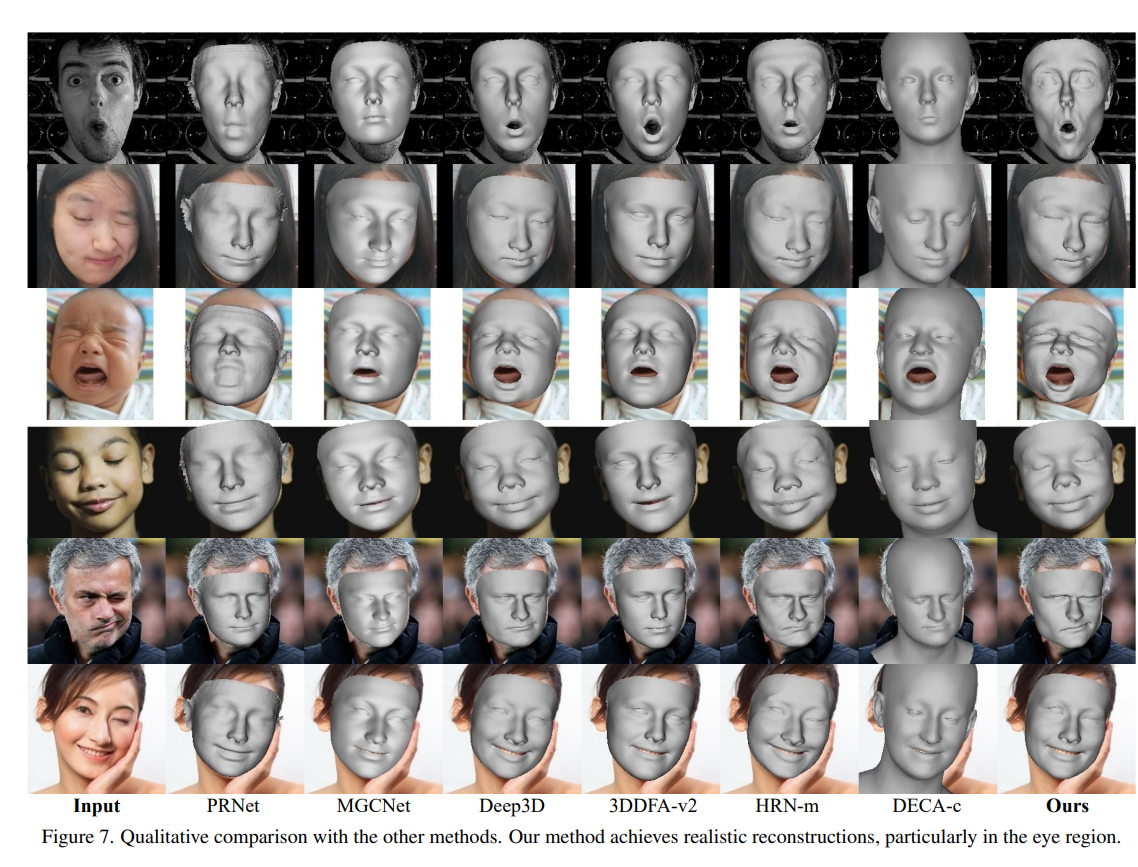
图6 与现有的SOTA方法相比,3DDFA-V3的重建结果可以非常准确地捕捉不对称和奇怪的面部变形。


5.模型推理
1. c++推理模型推理:
#include"face_reconstruction.h"
#include <opencv2/opencv.hpp>using namespace std;
using namespace cv;
using namespace dnn;Mat bilinear_interpolate(const Mat& img, const Mat& x, const Mat& y)
{img的形状是[1,3,h,w]const int num_pts = x.size[0];const int h = img.size[2];const int w = img.size[3];Mat out = Mat::zeros(num_pts, 3, CV_32FC1);for(int i=0;i<num_pts;i++){int x0 = (int)floor(x.ptr<float>(i)[0]);int x1 = x0 + 1;int y0 = (int)floor(y.ptr<float>(i)[0]);int y1 = y0 + 1;x0 = std::max(std::min(x0, w-1), 0);x1 = std::max(std::min(x1, w-1), 0);y0 = std::max(std::min(y0, h-1), 0);y1 = std::max(std::min(y1, h-1), 0);float i_a[3] = {img.ptr<float>(0, 0, y0)[x0], img.ptr<float>(0, 1, y0)[x0], img.ptr<float>(0, 2, y0)[x0]};float i_b[3] = {img.ptr<float>(0, 0, y1)[x0], img.ptr<float>(0, 1, y1)[x0], img.ptr<float>(0, 2, y1)[x0]};float i_c[3] = {img.ptr<float>(0, 0, y0)[x1], img.ptr<float>(0, 1, y0)[x1], img.ptr<float>(0, 2, y0)[x1]};float i_d[3] = {img.ptr<float>(0, 0, y1)[x1], img.ptr<float>(0, 1, y1)[x1], img.ptr<float>(0, 2, y1)[x1]};float wa = (x1 - x.ptr<float>(i)[0]) * (y1 - y.ptr<float>(i)[0]);float wb = (x1 - x.ptr<float>(i)[0]) * (y.ptr<float>(i)[0] - y0);float wc = (x.ptr<float>(i)[0] - x0) * (y1 - y.ptr<float>(i)[0]);float wd = (x.ptr<float>(i)[0] - x0) * (y.ptr<float>(i)[0] - y0);out.ptr<float>(i)[0] = wa * i_a[0] + wb * i_b[0] + wc * i_c[0] + wd * i_d[0];out.ptr<float>(i)[1] = wa * i_a[1] + wb * i_b[1] + wc * i_c[1] + wd * i_d[1];out.ptr<float>(i)[2] = wa * i_a[2] + wb * i_b[2] + wc * i_c[2] + wd * i_d[2];}return out;
}cv::Mat get_colors_from_uv(const cv::Mat& img, const cv::Mat& x, const cv::Mat& y)
{img的形状是[h,w,3]const int num_pts = x.size[0];const int h = img.size[0];const int w = img.size[1];Mat out = Mat::zeros(num_pts, 3, CV_32FC1);for(int i=0;i<num_pts;i++){int x0 = (int)floor(x.ptr<float>(i)[0]);int x1 = x0 + 1;int y0 = (int)floor(y.ptr<float>(i)[0]);int y1 = y0 + 1;x0 = std::max(std::min(x0, w-1), 0);x1 = std::max(std::min(x1, w-1), 0);y0 = std::max(std::min(y0, h-1), 0);y1 = std::max(std::min(y1, h-1), 0);float i_a[3] = {img.ptr<float>(y0, x0)[0], img.ptr<float>(y0, x0)[1], img.ptr<float>(y0, x0)[2]};float i_b[3] = {img.ptr<float>(y1, x0)[0], img.ptr<float>(y1, x0)[1], img.ptr<float>(y1, x0)[2]};float i_c[3] = {img.ptr<float>(y0, x1)[0], img.ptr<float>(y0, x1)[1], img.ptr<float>(y0, x1)[2]};float i_d[3] = {img.ptr<float>(y1, x1)[0], img.ptr<float>(y1, x1)[1], img.ptr<float>(y1, x1)[2]};float wa = (x1 - x.ptr<float>(i)[0]) * (y1 - y.ptr<float>(i)[0]);float wb = (x1 - x.ptr<float>(i)[0]) * (y.ptr<float>(i)[0] - y0);float wc = (x.ptr<float>(i)[0] - x0) * (y1 - y.ptr<float>(i)[0]);float wd = (x.ptr<float>(i)[0] - x0) * (y.ptr<float>(i)[0] - y0);out.ptr<float>(i)[0] = wa * i_a[0] + wb * i_b[0] + wc * i_c[0] + wd * i_d[0];out.ptr<float>(i)[1] = wa * i_a[1] + wb * i_b[1] + wc * i_c[1] + wd * i_d[1];out.ptr<float>(i)[2] = wa * i_a[2] + wb * i_b[2] + wc * i_c[2] + wd * i_d[2];}return out;
}Mat median_filtered_color_pca(const Mat& median_filtered_w, const Mat& uv_color_img, const Mat& uv_color_pca)
{/*median_filtered_w的形状是[1024,1024],数据类型是CV32FC3uv_color_img和uv_color_pca的形状都是[1024,1024,3], 数据类型是CV32FC1*/vector<int> shape = {uv_color_img.size[0], uv_color_img.size[1], 3};Mat out = Mat(shape, CV_32FC1);for(int h=0;h<uv_color_img.size[0];h++){for(int w=0;w<uv_color_img.size[1];w++){float x = uv_color_img.ptr<float>(h, w)[0];x = std::max(std::min(x, 1.f), 0.f);float y = uv_color_pca.ptr<float>(h, w)[0];y = std::max(std::min(y, 1.f), 0.f);out.ptr<float>(h, w)[0] = (1 - median_filtered_w.at<Vec3f>(h,w)[0]) * x + median_filtered_w.at<Vec3f>(h,w)[0] * y;x = uv_color_img.ptr<float>(h, w)[1];x = std::max(std::min(x, 1.f), 0.f);y = uv_color_pca.ptr<float>(h, w)[1];y = std::max(std::min(y, 1.f), 0.f);out.ptr<float>(h, w)[1] = (1 - median_filtered_w.at<Vec3f>(h,w)[1]) * x + median_filtered_w.at<Vec3f>(h,w)[1] * y;x = uv_color_img.ptr<float>(h, w)[2];x = std::max(std::min(x, 1.f), 0.f);y = uv_color_pca.ptr<float>(h, w)[2];y = std::max(std::min(y, 1.f), 0.f);out.ptr<float>(h, w)[2] = (1 - median_filtered_w.at<Vec3f>(h,w)[2]) * x + median_filtered_w.at<Vec3f>(h,w)[2] * y;}}return out;
}FaceModel::FaceModel(std::map<string, bool> args_)
{string model_path = "models/net_recon.onnx";this->net_recon = readNet(model_path);this->outnames = this->net_recon.getUnconnectedOutLayersNames();this->args = args_;this->u = Mat(107127, 1, CV_32FC1);FILE* fp = fopen("models/u.bin", "rb");fread((float*)this->u.data, sizeof(float), this->u.total(), fp);//导入数据fclose(fp);//关闭文件this->id = Mat(107127, 80, CV_32FC1);fp = fopen("models/id.bin", "rb");fread((float*)this->id.data, sizeof(float), this->id.total(), fp);fclose(fp);this->exp_ = Mat(107127, 64, CV_32FC1);fp = fopen("models/exp.bin", "rb");fread((float*)this->exp_.data, sizeof(float), this->exp_.total(), fp);fclose(fp);this->u_alb = Mat(107127, 1, CV_32FC1);fp = fopen("models/u_alb.bin", "rb");fread((float*)this->u_alb.data, sizeof(float), this->u_alb.total(), fp);fclose(fp);this->alb = Mat(107127, 80, CV_32FC1);fp = fopen("models/alb.bin", "rb");fread((float*)this->alb.data, sizeof(float), this->alb.total(), fp);fclose(fp);int len = 35709*8;fp = fopen("models/point_buf.bin", "rb");fread(this->point_buf, sizeof(int), len, fp);fclose(fp);len = 70789*3;this->tri.resize(len);fp = fopen("models/tri.bin", "rb");fread(this->tri.data(), sizeof(int), len, fp);fclose(fp);len = 35709*2;this->uv_coords.resize(len);fp = fopen("models/uv_coords.bin", "rb");fread(this->uv_coords.data(), sizeof(float), len, fp);fclose(fp);process_uvconst int uv_h = 1024;const int uv_w = 1024;this->uv_coords_numpy = Mat(35709, 3, CV_32FC1);this->uv_coords_torch = Mat(35709, 3, CV_32FC1);for(int i=0;i<35709;i++){this->uv_coords_numpy.ptr<float>(i)[0] = this->uv_coords[i*2] * (uv_w - 1);this->uv_coords_numpy.ptr<float>(i)[1] = this->uv_coords[i*2+1] * (uv_h - 1);this->uv_coords_numpy.ptr<float>(i)[2] = 0;this->uv_coords_torch.ptr<float>(i)[0] = (this->uv_coords_numpy.ptr<float>(i)[0] / 1023.f - 0.5f)*2.f + 1e-6;this->uv_coords_torch.ptr<float>(i)[1] = (this->uv_coords_numpy.ptr<float>(i)[1] / 1023.f - 0.5f)*2.f + 1e-6;this->uv_coords_torch.ptr<float>(i)[2] = (this->uv_coords_numpy.ptr<float>(i)[2] / 1023.f - 0.5f)*2.f + 1e-6;this->uv_coords_numpy.ptr<float>(i)[1] = 1024 - this->uv_coords_numpy.ptr<float>(i)[1] - 1;}this->uv_renderer = std::make_shared<MeshRenderer_UV_cpu>(1024);len = 68;fp = fopen("models/ldm68.bin", "rb");fread(this->ldm68, sizeof(int), len, fp);fclose(fp);len = 106;fp = fopen("models/ldm106.bin", "rb");fread(this->ldm106, sizeof(int), len, fp);fclose(fp);len = 134;fp = fopen("models/ldm134.bin", "rb");fread(this->ldm134, sizeof(int), len, fp);fclose(fp);for(int i=0;i<this->annotation_shapes.size();i++){len = this->annotation_shapes[i];vector<int> anno(len);string binpath = "models/annotation_"+to_string(i)+".bin";fp = fopen(binpath.c_str(), "rb");fread(anno.data(), sizeof(int), len, fp);fclose(fp);this->annotation.emplace_back(anno);}for(int i=0;i<this->annotation_tri_shapes.size();i++){len = this->annotation_tri_shapes[i][0]*this->annotation_tri_shapes[i][1];vector<int> anno_tri(len);string binpath = "models/annotation_tri_"+to_string(i)+".bin";fp = fopen(binpath.c_str(), "rb");fread(anno_tri.data(), sizeof(int), len, fp);fclose(fp);this->annotation_tri.emplace_back(anno_tri);}for(int i=0;i<this->parallel_shapes.size();i++){len = this->parallel_shapes[i];vector<int> para(len);string binpath = "models/parallel_"+to_string(i)+".bin";fp = fopen(binpath.c_str(), "rb");fread(para.data(), sizeof(int), len, fp);fclose(fp);this->parallel.emplace_back(para);}this->v_parallel.resize(35709, -1);for(int i=0;i<this->parallel.size();i++){for(int j=0;j<this->parallel[i].size();j++){this->v_parallel[this->parallel[i][j]] = i;}}const float rasterize_fov = 2 * atan(112. / 1015) * 180 / PI;this->renderer = std::make_shared<MeshRenderer_cpu>(rasterize_fov, 5.f, 15.f, 2*112);this->light_direction = this->lights.colRange(0,3);this->light_intensities = this->lights.colRange(3, this->lights.size[1]);this->light_direction_norm.resize(this->light_direction.size[0]);for(int i=0;i<this->light_direction.size[0];i++){this->light_direction_norm[i] = cv::norm(this->light_direction.row(i));}
}Mat FaceModel::compute_rotation(const Mat& angles)
{float x = angles.ptr<float>(0)[0];float y = angles.ptr<float>(0)[1];float z = angles.ptr<float>(0)[2];Mat rot_x = (Mat_<float>(3, 3) << 1, 0, 0, 0, cos(x), -sin(x), 0, sin(x), cos(x));Mat rot_y = (Mat_<float>(3, 3) << cos(y), 0, sin(y), 0, 1, 0, -sin(y), 0, cos(y));Mat rot_z = (Mat_<float>(3, 3) << cos(z), -sin(z), 0, sin(z), cos(z), 0, 0, 0, 1);Mat rot = rot_z * rot_y * rot_x;rot = rot.t();// vector<int> newshape = {1, 3, 3}; 由于在c++的opencv里不支持3维Mat的矩阵乘法,此处不考虑batchsize维度// rot.reshape(0, newshape);return rot;
}Mat FaceModel::transform(const Mat& face_shape, const Mat& rot, const Mat& trans)
{Mat out = face_shape * rot + cv::repeat(trans, face_shape.size[0], 1); ///c++里没有numpy的广播机制,所以这里需要用repeatreturn out;
}Mat FaceModel::to_camera(Mat& face_shape)
{face_shape.col(2) = this->camera_distance - face_shape.col(2);return face_shape;
}Mat FaceModel::to_image(const Mat& face_shape)
{Mat face_proj = face_shape * this->persc_proj;face_proj.colRange(0, 2) = face_proj.colRange(0, 2) / cv::repeat(face_proj.col(2), 1, 2);return face_proj.colRange(0, 2);
}Mat FaceModel::compute_shape(const Mat& alpha_id, const Mat& alpha_exp)
{Mat face_shape = alpha_id * this->id.t() + alpha_exp * this->exp_.t() + this->u.t();int len = face_shape.size[1] / 3;vector<int> newshape = {len, 3}; 由于在c++的opencv里不支持3维Mat的矩阵乘法,此处不考虑batchsize维度face_shape = face_shape.reshape(0, newshape);return face_shape;
}Mat FaceModel::compute_albedo(const Mat& alpha_alb, const bool normalize)
{Mat face_albedo = alpha_alb * this->alb.t() + this->u_alb.t();if(normalize){face_albedo /= 255.f;}int len = face_albedo.size[1] / 3;vector<int> newshape = {len, 3}; 由于在c++的opencv里不支持3维Mat的矩阵乘法,此处不考虑batchsize维度face_albedo = face_albedo.reshape(0, newshape);return face_albedo;
}Mat FaceModel::compute_norm(const Mat& face_shape)
{Mat face_norm = Mat::zeros(this->tri_shape[0]+1, 3, CV_32FC1);for(int i=0;i<this->tri_shape[0];i++){Mat v1 = face_shape.row(this->tri[i*3]);Mat v2 = face_shape.row(this->tri[i*3+1]);Mat v3 = face_shape.row(this->tri[i*3+2]);Mat e1 = v1 - v2;Mat e2 = v2 - v3;Mat n = e1.cross(e2);face_norm.row(i) = n / cv::norm(n);}Mat vertex_norm = Mat::zeros(this->point_buf_shape[0], 3, CV_32FC1);for(int i=0;i<this->point_buf_shape[0];i++){Mat vs = Mat::zeros(this->point_buf_shape[1], 3, CV_32FC1);for(int j=0;j<this->point_buf_shape[1];j++){face_norm.row(this->point_buf[i*this->point_buf_shape[1]+j]).copyTo(vs.row(j));}Mat vs_colsum;cv::reduce(vs, vs_colsum, 0, cv::REDUCE_SUM, CV_32FC1); ///沿着列求和vertex_norm.row(i) = vs_colsum / cv::norm(vs_colsum);}return vertex_norm;
}Mat FaceModel::compute_texture(const Mat& face_albedo, const Mat& face_norm, const Mat& alpha_sh)
{Mat alpha_sh_ = alpha_sh.reshape(0, {3, 9}); 不考虑batchsize维度alpha_sh_ += cv::repeat(this->init_lit, 3, 1);alpha_sh_ = alpha_sh_.t();Mat Y = Mat::zeros(face_norm.size[0], 9, CV_32FC1);Y.col(0) = this->SH_a[0] * this->SH_c[0] * Mat::ones(face_norm.size[0], 1, CV_32FC1);Y.col(1) = -this->SH_a[1] * this->SH_c[1] * face_norm.col(1);Y.col(2) = this->SH_a[1] * this->SH_c[1] * face_norm.col(2);Y.col(3) = -this->SH_a[1] * this->SH_c[1] * face_norm.col(0);Y.col(4) = this->SH_a[2] * this->SH_c[2] * face_norm.col(0).mul(face_norm.col(1)); ///python里的*是对应元素相乘,@是矩阵乘法, 而c++里的*是矩阵乘法,mul是对应元素相乘Y.col(5) = -this->SH_a[2] * this->SH_c[2] * face_norm.col(1).mul(face_norm.col(2));Y.col(6) = 0.5 * this->SH_a[2] * this->SH_c[2] / sqrt(3.f) * (3 * face_norm.col(2).mul(face_norm.col(2)) - 1.f);Y.col(7) = -this->SH_a[2] * this->SH_c[2] * face_norm.col(0).mul(face_norm.col(2));Y.col(8) = 0.5 * this->SH_a[2] * this->SH_c[2] * (face_norm.col(2).mul(face_norm.col(2)) - face_norm.col(1).mul(face_norm.col(1)));Mat face_texture = Mat::zeros(face_albedo.size[0], 3, CV_32FC1);face_texture.col(0) = Y * alpha_sh_.col(0);face_texture.col(1) = Y * alpha_sh_.col(1);face_texture.col(2) = Y * alpha_sh_.col(2);face_texture = face_texture.mul(face_albedo);return face_texture;
}Mat FaceModel::compute_gray_shading_with_directionlight(const Mat& face_texture, const Mat& normals)
{Mat texture = Mat(normals.size[0], 3, CV_32FC1); ///不考虑batchsize维度for(int i=0;i<normals.size[0];i++){float sum_[3] = {0.f, 0.f, 0.f};for(int j=0;j<this->lights.size[0];j++){const float x = this->light_direction_norm[j];float y = cv::sum(normals.row(i).mul(this->light_direction.row(j) / x))[0];y = std::max(std::min(y, 1.f), 0.f);sum_[0] += (y*this->light_intensities.ptr<float>(j)[0]);sum_[1] += (y*this->light_intensities.ptr<float>(j)[1]);sum_[2] += (y*this->light_intensities.ptr<float>(j)[2]);}texture.ptr<float>(i)[0] = face_texture.ptr<float>(i)[0] * (sum_[0] / this->lights.size[0]);texture.ptr<float>(i)[1] = face_texture.ptr<float>(i)[1] * (sum_[1] / this->lights.size[0]);texture.ptr<float>(i)[2] = face_texture.ptr<float>(i)[2] * (sum_[2] / this->lights.size[0]);}return texture;
}Mat FaceModel::get_landmarks_106_2d(const Mat& v2d, const Mat& face_shape, const Mat& angle, const Mat& trans)
{Mat temp_angle = angle.clone();temp_angle.ptr<float>(0)[2] = 0;Mat rotation_without_roll = this->compute_rotation(temp_angle);Mat temp = this->transform(face_shape, rotation_without_roll, trans);Mat v2d_without_roll = this->to_image(this->to_camera(temp));Mat visible_parallel = Mat(this->v_parallel.size(), 1, CV_32SC1, this->v_parallel.data());vector<int> ldm106_dynamic(this->ldm106, this->ldm106+106);for(int i=0;i<16;i++){Mat temp = v2d_without_roll.col(0).clone();temp.setTo(1e5, visible_parallel!=i);ldm106_dynamic[i] = std::min_element(temp.begin<float>(), temp.end<float>()) - temp.begin<float>();}for(int i=17;i<33;i++){Mat temp = v2d_without_roll.col(0).clone();temp.setTo(-1e5, visible_parallel!=i);ldm106_dynamic[i] = std::max_element(temp.begin<float>(), temp.end<float>()) - temp.begin<float>();}Mat out = Mat(106, 2, CV_32FC1);for(int i=0;i<106;i++){out.ptr<float>(i)[0] = v2d.ptr<float>(ldm106_dynamic[i])[0];out.ptr<float>(i)[1] = v2d.ptr<float>(ldm106_dynamic[i])[1];}return out;
}vector<Mat> FaceModel::segmentation(const Mat& v3d)
{// const int sz[3] = {224,224,8};// Mat seg = Mat::zeros(3, sz, CV_32FC1);vector<Mat> seg(8);for(int i=0;i<8;i++){std::tuple<Mat, Mat, Mat, vector<int>> render_outs = this->renderer->forward(v3d, this->annotation_tri[i].data(), this->annotation_tri_shapes[i]);seg[i] = std::get<0>(render_outs);}return seg;
}vector<Mat> FaceModel::segmentation_visible(const Mat& v3d, const vector<int>& visible_idx)
{vector<Mat> seg(8);for(int i=0;i<8;i++){Mat temp = Mat::zeros(v3d.size[0], v3d.size[1], CV_32FC1);for(int j=0;j<this->annotation[i].size();j++){temp.row(this->annotation[i][j]) = 1;}for(int j=0;j<visible_idx.size();j++){if(visible_idx[j] == 0){temp.row(j) = 0;}}std::tuple<Mat, Mat, Mat, vector<int>> render_outs = this->renderer->forward(v3d, this->tri.data(), this->tri_shape, temp);Mat temp_image = std::get<2>(render_outs);Mat temp_mask = Mat(temp_image.size[0], temp_image.size[1], CV_32FC1);for(int h=0;h<temp_image.size[0];h++){for(int w=0;w<temp_image.size[1];w++){float sum = 0.f;for(int c=0;c<temp_image.size[2];c++){sum += temp_image.ptr<float>(h,w)[c]; }temp_mask.ptr<float>(h)[w] = sum / (float)temp_image.size[2];}}Mat mask = Mat::zeros(temp_mask.size[0], temp_mask.size[1], CV_32FC1);mask.setTo(1, temp_mask >= 0.5);mask.copyTo(seg[i]);}return seg;
}DataDict FaceModel::forward(const Mat& im)
{Mat input_img;im.convertTo(input_img, CV_32FC3, 1/255.f);Mat blob = blobFromImage(input_img);this->net_recon.setInput(blob);std::vector<Mat> outs;this->net_recon.forward(outs, this->outnames);Mat alpha = outs[0];split_alphastd::map<string, Mat> alpha_dict = {{"id", alpha.colRange(0, 80)}, {"exp", alpha.colRange(80, 144)}, {"alb", alpha.colRange(144, 224)}, {"angle", alpha.colRange(224, 227)},{"sh", alpha.colRange(227, 254)}, {"trans", alpha.colRange(254, alpha.size[1])}};compute_shapeMat face_shape = this->compute_shape(alpha_dict["id"], alpha_dict["exp"]);Mat rotation = this->compute_rotation(alpha_dict["angle"]);Mat v3d = this->transform(face_shape, rotation, alpha_dict["trans"]);v3d = this->to_camera(v3d);Mat v2d =this->to_image(v3d);Mat face_albedo = this->compute_albedo(alpha_dict["alb"]);Mat face_norm = this->compute_norm(face_shape);Mat face_norm_roted = face_norm * rotation;Mat face_texture = this->compute_texture(face_albedo, face_norm_roted, alpha_dict["sh"]);face_texture.setTo(0, face_texture < 0);face_texture.setTo(1, face_texture > 1);std::tuple<Mat, Mat, Mat, vector<int>> render_outs = this->renderer->forward(v3d, this->tri.data(), this->tri_shape, face_texture, true);Mat pred_image = std::get<2>(render_outs);vector<int> visible_idx_renderer = std::get<3>(render_outs);Mat gray_shading = this->compute_gray_shading_with_directionlight(Mat::ones(face_albedo.rows, face_albedo.cols, CV_32FC1)*0.78, face_norm_roted);std::tuple<Mat, Mat, Mat, vector<int>> render_outs2 = this->renderer->forward(v3d, this->tri.data(), this->tri_shape, gray_shading);Mat mask = std::get<0>(render_outs2);Mat pred_image_shape = std::get<2>(render_outs2);DataDict result_dict; ///也可以使用结构体result_dict = {{"v3d", v3d}, {"v2d", v2d}, {"face_texture", face_texture}, {"tri", this->tri}, {"uv_coords", this->uv_coords}, {"render_shape", convert_hwc2bgr(pred_image_shape)}, {"render_face", convert_hwc2bgr(pred_image)}, {"render_mask", mask}};vector<int> visible_idx(35709, 0);if(this->args["seg_visible"] || this->args["extractTex"]){for(int i=0;i<visible_idx_renderer.size();i++){visible_idx[visible_idx_renderer[i]] = 1;}for(int i=0;i<face_norm_roted.size[0];i++){if(face_norm_roted.ptr<float>(i)[2] < 0){visible_idx[i] = 0;}}}if(this->args["ldm68"]){/get_landmarks_68Mat v2d_68 = Mat(68, 2, CV_32FC1);for(int i=0;i<68;i++){v2d_68.ptr<float>(i)[0] = v2d.ptr<float>(this->ldm68[i])[0];v2d_68.ptr<float>(i)[1] = v2d.ptr<float>(this->ldm68[i])[1];}result_dict["ldm68"] = v2d_68;}if(this->args["ldm106"]){/get_landmarks_106Mat v2d_106 = Mat(106, 2, CV_32FC1);for(int i=0;i<106;i++){v2d_106.ptr<float>(i)[0] = v2d.ptr<float>(this->ldm106[i])[0];v2d_106.ptr<float>(i)[1] = v2d.ptr<float>(this->ldm106[i])[1];}result_dict["ldm106"] = v2d_106;}if(this->args["ldm106_2d"]){Mat v2d_106_2d = this->get_landmarks_106_2d(v2d, face_shape, alpha_dict["angle"], alpha_dict["trans"]);result_dict["ldm106_2d"] = v2d_106_2d;}if(this->args["ldm134"]){/get_landmarks_134Mat v2d_134 = Mat(134, 2, CV_32FC1);for(int i=0;i<134;i++){v2d_134.ptr<float>(i)[0] = v2d.ptr<float>(this->ldm134[i])[0];v2d_134.ptr<float>(i)[1] = v2d.ptr<float>(this->ldm134[i])[1];}result_dict["ldm134"] = v2d_134;}if(this->args["seg"]){vector<Mat> seg = this->segmentation(v3d);result_dict["seg"] = seg;}if(this->args["seg_visible"]){vector<Mat> seg_visible = this->segmentation_visible(v3d, visible_idx);result_dict["seg_visible"] = seg_visible;}if(this->args["extractTex"]){std::tuple<Mat, Mat, Mat, vector<int>> uv_renderer_outs = this->uv_renderer->forward(this->uv_coords_torch, this->tri.data(), this->tri_shape, face_texture);Mat uv_color_pca = std::get<2>(uv_renderer_outs);Mat img_colors = bilinear_interpolate(blob, v2d.col(0), v2d.col(1));const vector<int> newshape = {1, img_colors.size[0], img_colors.size[1]};std::tuple<Mat, Mat, Mat, vector<int>> uv_renderer_outs2 = this->uv_renderer->forward(this->uv_coords_torch, this->tri.data(), this->tri_shape, img_colors.reshape(0, newshape));Mat uv_color_img = std::get<2>(uv_renderer_outs2);Mat visible_idx_mat = cv::repeat(Mat(visible_idx.size(), 1, CV_32SC1, visible_idx.data()), 1, 3);visible_idx_mat.convertTo(visible_idx_mat, CV_32FC1);std::tuple<Mat, Mat, Mat, vector<int>> uv_renderer_outs3 = this->uv_renderer->forward(this->uv_coords_torch, this->tri.data(), this->tri_shape, 1-visible_idx_mat);Mat uv_weight = std::get<2>(uv_renderer_outs3);Mat median_filtered_w;cv::medianBlur(converthwc2bgr(uv_weight), median_filtered_w, 31);median_filtered_w.convertTo(median_filtered_w, CV_32FC3, 1/255.f);Mat res_colors = median_filtered_color_pca(median_filtered_w, uv_color_img, uv_color_pca);Mat v_colors = get_colors_from_uv(res_colors, this->uv_coords_numpy.col(0), this->uv_coords_numpy.col(1));result_dict["extractTex"] = v_colors;}cout<<"forward done"<<endl;return result_dict;
}
main.cpp
#include "det_face_landmarks.h"
#include "face_reconstruction.h"
#include <opencv2/opencv.hpp>#pragma comment(linker, "/STACK:10000000")using namespace std;
using namespace cv;int main()
{std::map<std::string, bool> args = {{"iscrop", true}, {"ldm68", true}, {"ldm106", true},{"ldm106_2d", true}, {"ldm134", true}, {"seg", true}, {"seg_visible", true}, {"useTex", true}, {"extractTex", true}};RetinaFace facebox_detector;FaceModel recon_model(args);Visualizer my_visualize;Mat srcimg = imread("data/3.png");float trans_params[5];Mat im = facebox_detector.detect(srcimg, trans_params);DataDict results = recon_model.forward(im);cv::Mat cv_dst;vector<Mat> visualize_list = my_visualize.visualize_and_output(results, args, trans_params, srcimg,cv_dst);最重要的3个结果图保存起来cv::namedWindow("dst", 0);cv::namedWindow("render_face", 0);cv::namedWindow("seg_face", 0);cv::imshow("dst", cv_dst);cv::imshow("render_face", visualize_list[2]);cv::imshow("seg_face", visualize_list[7]);cv::waitKey();return 0;
}


5.2 python推理代码
from __future__ import absolute_import
from __future__ import division
from __future__ import print_function
import numpy as np
from time import timedef isPointInTri(point, tri_points):tp = tri_points# vectorsv0 = tp[2,:] - tp[0,:]v1 = tp[1,:] - tp[0,:]v2 = point - tp[0,:]# dot productsdot00 = np.dot(v0.T, v0)dot01 = np.dot(v0.T, v1)dot02 = np.dot(v0.T, v2)dot11 = np.dot(v1.T, v1)dot12 = np.dot(v1.T, v2)# barycentric coordinatesif dot00*dot11 - dot01*dot01 == 0:inverDeno = 0else:inverDeno = 1/(dot00*dot11 - dot01*dot01)u = (dot11*dot02 - dot01*dot12)*inverDenov = (dot00*dot12 - dot01*dot02)*inverDeno# check if point in trianglereturn (u >= 0) & (v >= 0) & (u + v < 1)def get_point_weight(point, tri_points):tp = tri_points# vectorsv0 = tp[2,:] - tp[0,:]v1 = tp[1,:] - tp[0,:]v2 = point - tp[0,:]# dot productsdot00 = np.dot(v0.T, v0)dot01 = np.dot(v0.T, v1)dot02 = np.dot(v0.T, v2)dot11 = np.dot(v1.T, v1)dot12 = np.dot(v1.T, v2)# barycentric coordinatesif dot00*dot11 - dot01*dot01 == 0:inverDeno = 0else:inverDeno = 1/(dot00*dot11 - dot01*dot01)u = (dot11*dot02 - dot01*dot12)*inverDenov = (dot00*dot12 - dot01*dot02)*inverDenow0 = 1 - u - vw1 = vw2 = ureturn w0, w1, w2def rasterize_triangles(vertices, triangles, h, w):# initial depth_buffer = np.zeros([h, w]) - 999999. #+ np.min(vertices[2,:]) - 999999. # set the initial z to the farest positiontriangle_buffer = np.zeros([h, w], dtype = np.int32) - 1 # if tri id = -1, the pixel has no triangle correspondancebarycentric_weight = np.zeros([h, w, 3], dtype = np.float32) # for i in range(triangles.shape[0]):tri = triangles[i, :] # 3 vertex indices# the inner bounding boxumin = max(int(np.ceil(np.min(vertices[tri, 0]))), 0)umax = min(int(np.floor(np.max(vertices[tri, 0]))), w-1)vmin = max(int(np.ceil(np.min(vertices[tri, 1]))), 0)vmax = min(int(np.floor(np.max(vertices[tri, 1]))), h-1)if umax<umin or vmax<vmin:continuefor u in range(umin, umax+1):for v in range(vmin, vmax+1):if not isPointInTri([u,v], vertices[tri, :2]): continuew0, w1, w2 = get_point_weight([u, v], vertices[tri, :2]) # barycentric weightpoint_depth = w0*vertices[tri[0], 2] + w1*vertices[tri[1], 2] + w2*vertices[tri[2], 2]if point_depth > depth_buffer[v, u]:depth_buffer[v, u] = point_depthtriangle_buffer[v, u] = ibarycentric_weight[v, u, :] = np.array([w0, w1, w2])return depth_buffer, triangle_buffer, barycentric_weightdef render_colors_ras(vertices, triangles, colors, h, w, c = 3):assert vertices.shape[0] == colors.shape[0]depth_buffer, triangle_buffer, barycentric_weight = rasterize_triangles(vertices, triangles, h, w)triangle_buffer_flat = np.reshape(triangle_buffer, [-1]) # [h*w]barycentric_weight_flat = np.reshape(barycentric_weight, [-1, c]) #[h*w, c]weight = barycentric_weight_flat[:, :, np.newaxis] # [h*w, 3(ver in tri), 1]colors_flat = colors[triangles[triangle_buffer_flat, :], :] # [h*w(tri id in pixel), 3(ver in tri), c(color in ver)]colors_flat = weight*colors_flat # [h*w, 3, 3]colors_flat = np.sum(colors_flat, 1) #[h*w, 3]. add tri.image = np.reshape(colors_flat, [h, w, c])# mask = (triangle_buffer[:,:] > -1).astype(np.float32)# image = image*mask[:,:,np.newaxis]return imagedef render_colors(vertices, triangles, colors, h, w, c = 3):assert vertices.shape[0] == colors.shape[0]# initial image = np.zeros((h, w, c))depth_buffer = np.zeros([h, w]) - 999999.for i in range(triangles.shape[0]):tri = triangles[i, :] # 3 vertex indices# the inner bounding boxumin = max(int(np.ceil(np.min(vertices[tri, 0]))), 0)umax = min(int(np.floor(np.max(vertices[tri, 0]))), w-1)vmin = max(int(np.ceil(np.min(vertices[tri, 1]))), 0)vmax = min(int(np.floor(np.max(vertices[tri, 1]))), h-1)if umax<umin or vmax<vmin:continuefor u in range(umin, umax+1):for v in range(vmin, vmax+1):if not isPointInTri([u,v], vertices[tri, :2]): continuew0, w1, w2 = get_point_weight([u, v], vertices[tri, :2])point_depth = w0*vertices[tri[0], 2] + w1*vertices[tri[1], 2] + w2*vertices[tri[2], 2]if point_depth > depth_buffer[v, u]:depth_buffer[v, u] = point_depthimage[v, u, :] = w0*colors[tri[0], :] + w1*colors[tri[1], :] + w2*colors[tri[2], :]return imagedef render_texture(vertices, triangles, texture, tex_coords, tex_triangles, h, w, c = 3, mapping_type = 'nearest'):assert triangles.shape[0] == tex_triangles.shape[0]tex_h, tex_w, _ = texture.shape# initial image = np.zeros((h, w, c))depth_buffer = np.zeros([h, w]) - 999999.for i in range(triangles.shape[0]):tri = triangles[i, :] # 3 vertex indicestex_tri = tex_triangles[i, :] # 3 tex indice# the inner bounding boxumin = max(int(np.ceil(np.min(vertices[tri, 0]))), 0)umax = min(int(np.floor(np.max(vertices[tri, 0]))), w-1)vmin = max(int(np.ceil(np.min(vertices[tri, 1]))), 0)vmax = min(int(np.floor(np.max(vertices[tri, 1]))), h-1)if umax<umin or vmax<vmin:continuefor u in range(umin, umax+1):for v in range(vmin, vmax+1):if not isPointInTri([u,v], vertices[tri, :2]): continuew0, w1, w2 = get_point_weight([u, v], vertices[tri, :2])point_depth = w0*vertices[tri[0], 2] + w1*vertices[tri[1], 2] + w2*vertices[tri[2], 2]if point_depth > depth_buffer[v, u]:# update depthdepth_buffer[v, u] = point_depth # tex coordtex_xy = w0*tex_coords[tex_tri[0], :] + w1*tex_coords[tex_tri[1], :] + w2*tex_coords[tex_tri[2], :]tex_xy[0] = max(min(tex_xy[0], float(tex_w - 1)), 0.0); tex_xy[1] = max(min(tex_xy[1], float(tex_h - 1)), 0.0); # nearestif mapping_type == 'nearest':tex_xy = np.round(tex_xy).astype(np.int32)tex_value = texture[tex_xy[1], tex_xy[0], :] # bilinearelif mapping_type == 'bilinear':# next 4 pixelsul = texture[int(np.floor(tex_xy[1])), int(np.floor(tex_xy[0])), :]ur = texture[int(np.floor(tex_xy[1])), int(np.ceil(tex_xy[0])), :]dl = texture[int(np.ceil(tex_xy[1])), int(np.floor(tex_xy[0])), :]dr = texture[int(np.ceil(tex_xy[1])), int(np.ceil(tex_xy[0])), :]yd = tex_xy[1] - np.floor(tex_xy[1])xd = tex_xy[0] - np.floor(tex_xy[0])tex_value = ul*(1-xd)*(1-yd) + ur*xd*(1-yd) + dl*(1-xd)*yd + dr*xd*ydimage[v, u, :] = tex_valuereturn imagedef MeshRenderer_cpu_core(vertices, triangles, colors, h, w, c = 3):assert vertices.shape[0] == colors.shape[0]# initial image = np.zeros((h, w, c))depth_buffer = np.zeros([h, w]) - 999999.triangle_buffer = np.zeros([h, w], dtype = np.int32) - 1 # if tri id = -1, the pixel has no triangle correspondancebarycentric_weight = np.zeros([h, w, 3], dtype = np.float32) # for i in range(triangles.shape[0]):tri = triangles[i, :] # 3 vertex indices# the inner bounding boxumin = max(int(np.ceil(np.min(vertices[tri, 0]))), 0)umax = min(int(np.floor(np.max(vertices[tri, 0]))), w-1)vmin = max(int(np.ceil(np.min(vertices[tri, 1]))), 0)vmax = min(int(np.floor(np.max(vertices[tri, 1]))), h-1)if umax<umin or vmax<vmin:continuefor u in range(umin, umax+1):for v in range(vmin, vmax+1):if not isPointInTri([u,v], vertices[tri, :2]): continuew0, w1, w2 = get_point_weight([u, v], vertices[tri, :2])point_depth = w0*vertices[tri[0], 2] + w1*vertices[tri[1], 2] + w2*vertices[tri[2], 2]if point_depth > depth_buffer[v, u]:depth_buffer[v, u] = point_depthimage[v, u, :] = w0*colors[tri[0], :] + w1*colors[tri[1], :] + w2*colors[tri[2], :]triangle_buffer[v, u] = ibarycentric_weight[v, u, :] = np.array([w0, w1, w2])return image, depth_buffer, triangle_buffer, barycentric_weight
推理结果:


相关文章:

3DDFA-V3——基于人脸分割几何信息指导下的三维人脸重建
1. 研究背景 从二维图像中重建三维人脸是计算机视觉研究的一项关键任务。在虚拟现实、医疗美容、计算机生成图像等领域中,研究人员通常依赖三维可变形模型(3DMM)进行人脸重建,以定位面部特征和捕捉表情。然而,现有的方…...
)
求串长(不使用任何字符串库函数)
问题描述 编写一个程序,输入一个字符串,输出串的长度。 要求: (1)字符串长度不超过100个字符。 (2)不使用任何字符串库函数,建议使用堆串存储结构。 输入描述 输入一个字符串。 …...

第02章 MySQL环境搭建
一、MySQL的卸载 如果安装mysql时出现问题,则需要将mysql卸载干净再重新安装。如果卸载不干净,仍然会报错安装不成功。 步骤1:停止MySQL服务 在卸载之前,先停止MySQL8.0的服务。按键盘上的“Ctrl Alt Delete”组合键࿰…...

linux系统编程 man查看manual.stat
获取文件属性,(从inode结构体中获取) stat/lstat 函数 int stat(const char *path, struct stat *buf); 参数: path: 文件路径 buf:(传出参数) 存放文件属性,inode结构体…...

从网络到缓存:在Android中高效管理图片加载
文章目录 在Android应用中实现图片缓存和下载项目结构使用 代码解析关键功能解析1. 图片加载方法2. 下载图片3. 保存图片到缓存4. 文件名提取 总结 首先我们需要在配置AndroidManifest.xml里面添加 <uses-permission android:name"android.permission.INTERNET" …...

【数据结构】链表详解:数据节点的链接原理
链表(Linked List)是一种基础的数据结构,是程序设计中用来存储数据的典型方法之一。链表特别适合插入和删除操作频繁的场景,是了解数据结构和算法的基础。本文将从零开始,带大家了解链表的底层原理、类型(单…...

使用AWS Redshift从AWS MSK中读取数据
Amazon Redshift 流式摄取的目的是简化将流式数据直接从流式服务摄取到 Amazon Redshift 或 Amazon Redshift Serverless 的过程。 官方文档[1]中有详细步骤。用unauthenticated, IAM 的方式均可以进行连接,只不过使用的是不同端口:9092或者9098 [1] h…...

从0开始学统计-数据类别与测量层次
数据分析前,我们首先要弄清楚数据的分类。数据并不仅仅是一堆数字和文字,它们实际上代表了我们看待事物属性的不同视角。从最宽泛的角度出发,我们可以将数据划分为定量(比如用数字表示)或者定性(例如&#…...

使用AIM对SAP PO核心指标的自动化巡检监控
一、背景 由于SAP PO系统维护成本较高,各类型异常报错等都需要人员进行时刻监控和响应,遂由AIM平台进行自动化巡检SAP PO的各指标,然后告警通知用户,节省维护成本和提高工作效率 二、核心指标监控 SAP PO失败消息 适用于S…...

C++——unordered_map和unordered_set的封装
unordered_map和unordered_set的底层结构用到的都是在哈希表模拟实现中的哈希桶的实现方式,哈希桶的具体实现我已经在哈希表的模拟实现里做过详细的介绍,这边会引用里面的代码进行改造和封装,同时为了方便操作,同样我采用二倍扩容…...

微信小程序scroll-view吸顶css样式化表格的表头及iOS上下滑动表头的颜色覆盖、z-index应用及性能分析
微信小程序scroll-view吸顶css样式化表格的表头及iOS上下滑动表头的颜色覆盖、z-index应用及性能分析 目录 微信小程序scroll-view吸顶css样式化表格的表头及iOS上下滑动表头的颜色覆盖、z-index应用及性能分析 1、iOS在scroll-view内部上下滑动吸顶的现象 正常的上下滑动吸顶…...

【高中数学】数列
等差数列前 n n n 项和性质 公式一: S n n ( a 1 a n ) 2 S_n\frac{n(a_1a_n)}{2} Sn2n(a1an) 公式二: S n n a 1 n ( n − 1 ) 2 d S_nna_1\frac{n(n-1)}{2}d Snna12n(n−1)d 性质1:等差数列中依次 k k k 项之和 S …...

数字媒体技术基础:AMF(ACES 元数据文件 )
在现代电影和电视制作中,色彩管理变得越来越重要。ACES(Academy Color Encoding System,美国电影艺术与科学学院颜色编码系统)是一个广泛采用的色彩管理和交换系统,旨在解决不同设备、软件和工作流程之间的色彩不一致问…...

Apache Dubbo (RPC框架)
本文参考官方文档:Apache Dubbo 1. Dubbo 简介与核心功能 Apache Dubbo 是一个高性能、轻量级的开源Java RPC框架,用于快速开发高性能的服务。它提供了服务的注册、发现、调用、监控等核心功能,以及负载均衡、流量控制、服务降级等高级功能。…...
LeetCode 3226. 使两个整数相等的位更改次数
. - 力扣(LeetCode) 题目 给你两个正整数 n 和 k。你可以选择 n 的 二进制表示 中任意一个值为 1 的位,并将其改为 0。 返回使得 n 等于 k 所需要的更改次数。如果无法实现,返回 -1。 示例 1: 输入: n …...

面试经典 150 题:189、383
189. 轮转数组 【参考代码】 class Solution { public:void rotate(vector<int>& nums, int k) {int size nums.size();if(1 size){return;}vector<int> temp(size);//k k % size;for(int i0; i<size; i){temp[(i k) % size] nums[i];}nums temp; }…...
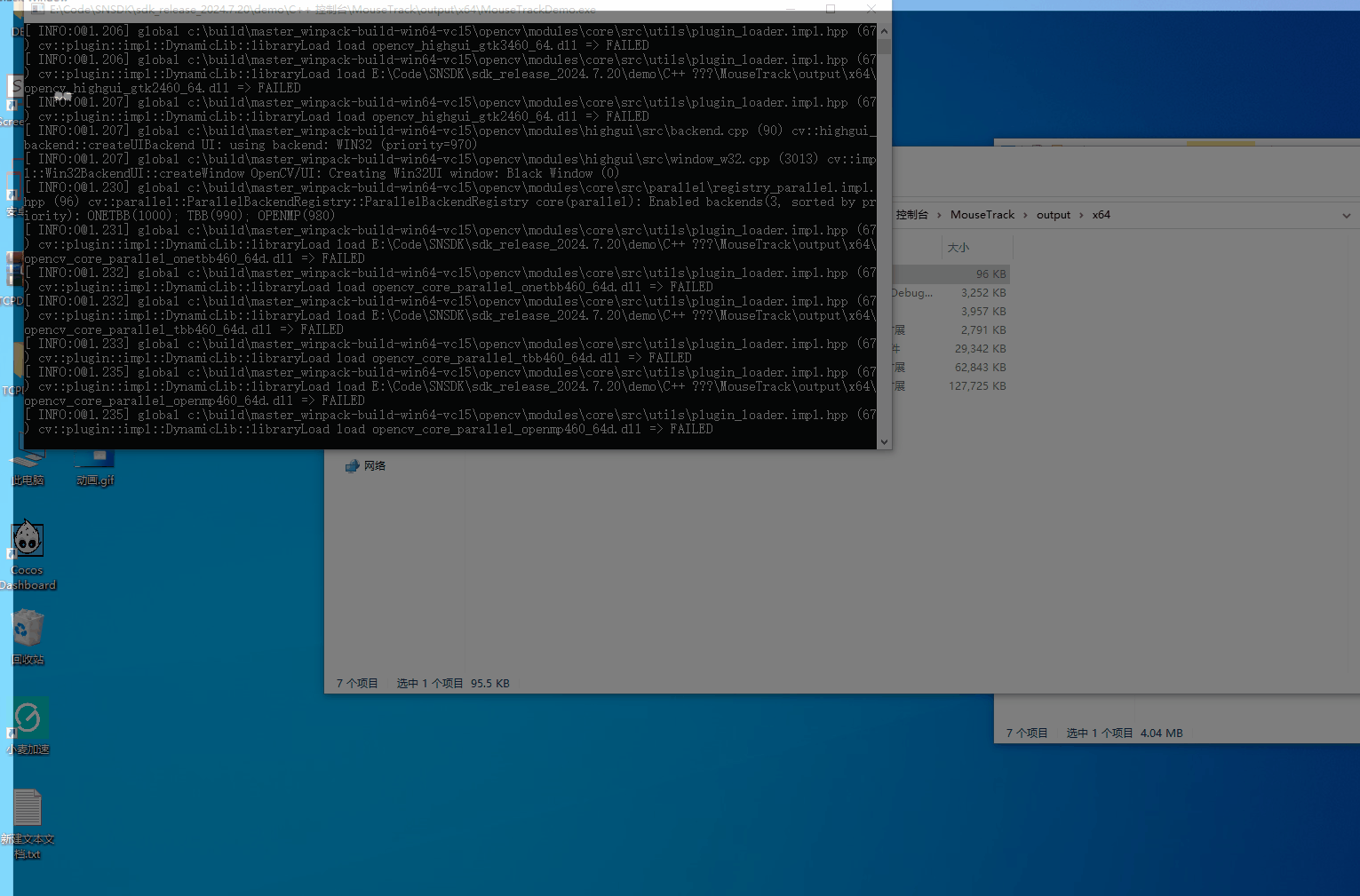
Python模拟真人动态生成鼠标滑动路径
一.简介 鼠标轨迹算法是一种模拟人类鼠标操作的程序,它能够模拟出自然而真实的鼠标移动路径。 鼠标轨迹算法的底层实现采用C/C语言,原因在于C/C提供了高性能的执行能力和直接访问操作系统底层资源的能力。 鼠标轨迹算法具有以下优势: 模拟…...
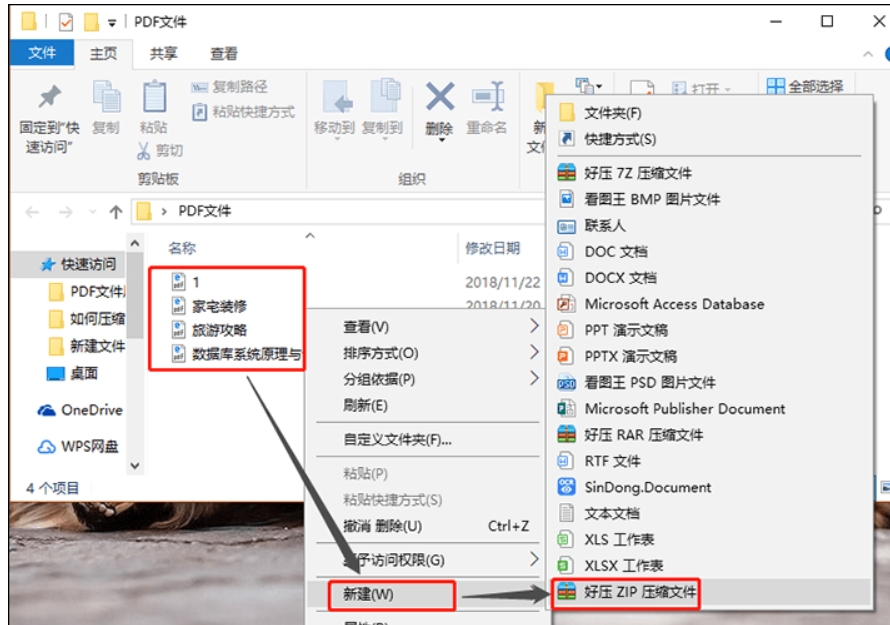
如何压缩pdf文件的大小?5分钟压缩pdf的方法推荐
如何压缩pdf文件的大小?在现代办公和学习中,PDF文件因其稳定性和广泛的兼容性被广泛使用。然而,随着文件内容的增多,制作好的PDF文件常常变得过大,给使用带来了诸多不便。无论是电子邮件附件的发送,还是在线…...

【SQL】[2BP01] ERROR: cannot drop table course because other objects depend on it
问题描述 在尝试执行以下SQL语句时,发生错误。 DROP TABLE Course RESTRICT;执行以上语句后,系统返回了一个错误提示: [2BP01] ERROR: cannot drop table course because other objects depend on it 详细:constraint sc_cno_…...

gbase8s之spring框架用druid中间件报语法错误
spring框架 调用druid中间件 时报这个错: MetaDataAccessException: Could not get Connection for extracting meta-data; nested exception is org.springframework.jdbc.CannotGetJdbcConnectionException: Failed to obtain JDBC Connection; nested exception …...
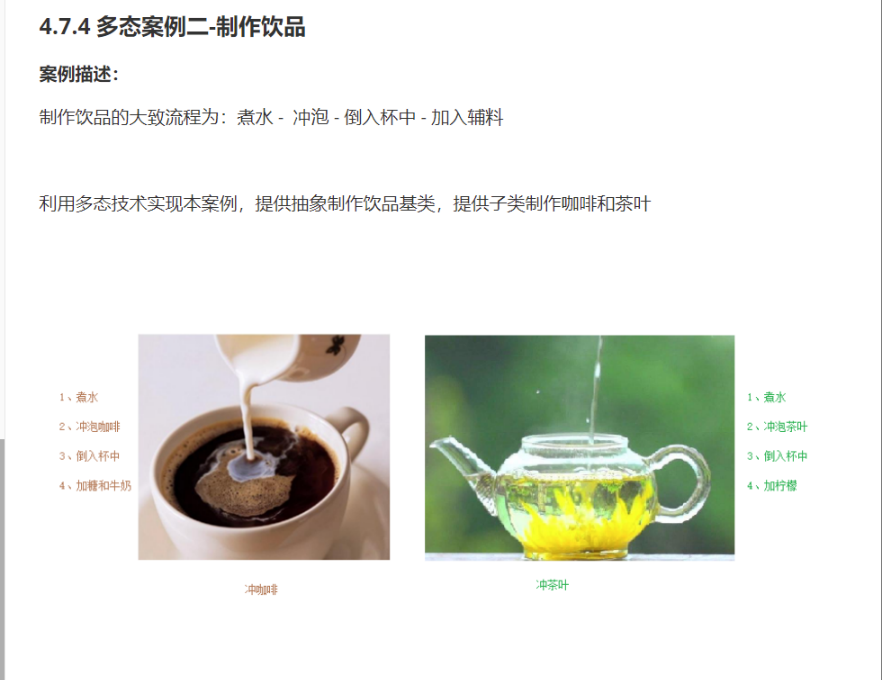
C++_核心编程_多态案例二-制作饮品
#include <iostream> #include <string> using namespace std;/*制作饮品的大致流程为:煮水 - 冲泡 - 倒入杯中 - 加入辅料 利用多态技术实现本案例,提供抽象制作饮品基类,提供子类制作咖啡和茶叶*//*基类*/ class AbstractDr…...

Golang dig框架与GraphQL的完美结合
将 Go 的 Dig 依赖注入框架与 GraphQL 结合使用,可以显著提升应用程序的可维护性、可测试性以及灵活性。 Dig 是一个强大的依赖注入容器,能够帮助开发者更好地管理复杂的依赖关系,而 GraphQL 则是一种用于 API 的查询语言,能够提…...

Nuxt.js 中的路由配置详解
Nuxt.js 通过其内置的路由系统简化了应用的路由配置,使得开发者可以轻松地管理页面导航和 URL 结构。路由配置主要涉及页面组件的组织、动态路由的设置以及路由元信息的配置。 自动路由生成 Nuxt.js 会根据 pages 目录下的文件结构自动生成路由配置。每个文件都会对…...
基础光照(Basic Lighting))
C++.OpenGL (10/64)基础光照(Basic Lighting)
基础光照(Basic Lighting) 冯氏光照模型(Phong Lighting Model) #mermaid-svg-GLdskXwWINxNGHso {font-family:"trebuchet ms",verdana,arial,sans-serif;font-size:16px;fill:#333;}#mermaid-svg-GLdskXwWINxNGHso .error-icon{fill:#552222;}#mermaid-svg-GLd…...
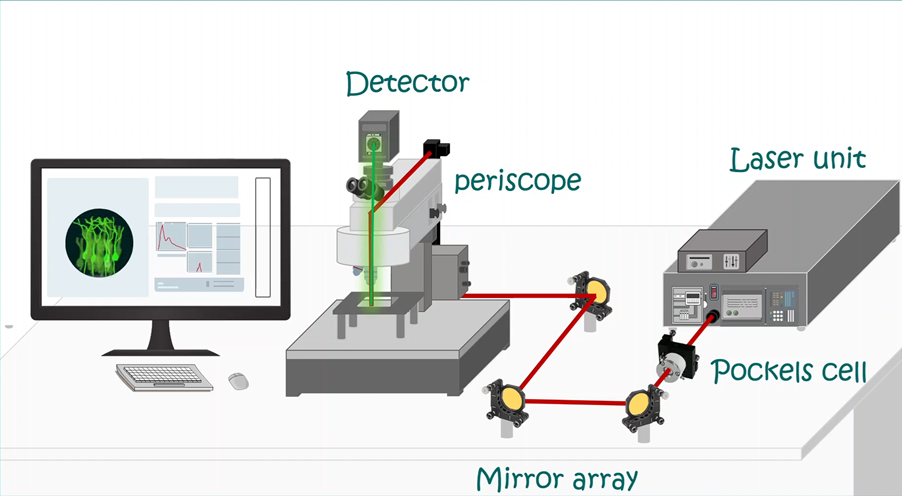
LabVIEW双光子成像系统技术
双光子成像技术的核心特性 双光子成像通过双低能量光子协同激发机制,展现出显著的技术优势: 深层组织穿透能力:适用于活体组织深度成像 高分辨率观测性能:满足微观结构的精细研究需求 低光毒性特点:减少对样本的损伤…...
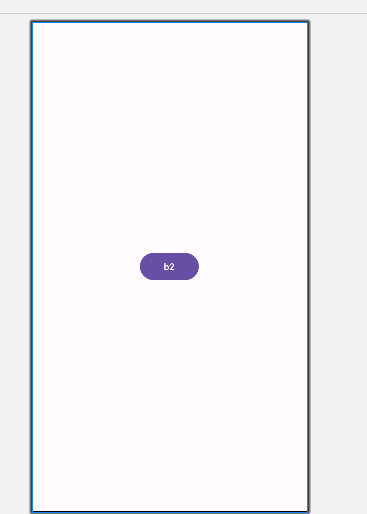
android RelativeLayout布局
<?xml version"1.0" encoding"utf-8"?> <RelativeLayout xmlns:android"http://schemas.android.com/apk/res/android"android:layout_width"match_parent"android:layout_height"match_parent"android:gravity&…...

在 Spring Boot 中使用 JSP
jsp? 好多年没用了。重新整一下 还费了点时间,记录一下。 项目结构: pom: <?xml version"1.0" encoding"UTF-8"?> <project xmlns"http://maven.apache.org/POM/4.0.0" xmlns:xsi"http://ww…...

提升移动端网页调试效率:WebDebugX 与常见工具组合实践
在日常移动端开发中,网页调试始终是一个高频但又极具挑战的环节。尤其在面对 iOS 与 Android 的混合技术栈、各种设备差异化行为时,开发者迫切需要一套高效、可靠且跨平台的调试方案。过去,我们或多或少使用过 Chrome DevTools、Remote Debug…...

Unity中的transform.up
2025年6月8日,周日下午 在Unity中,transform.up是Transform组件的一个属性,表示游戏对象在世界空间中的“上”方向(Y轴正方向),且会随对象旋转动态变化。以下是关键点解析: 基本定义 transfor…...
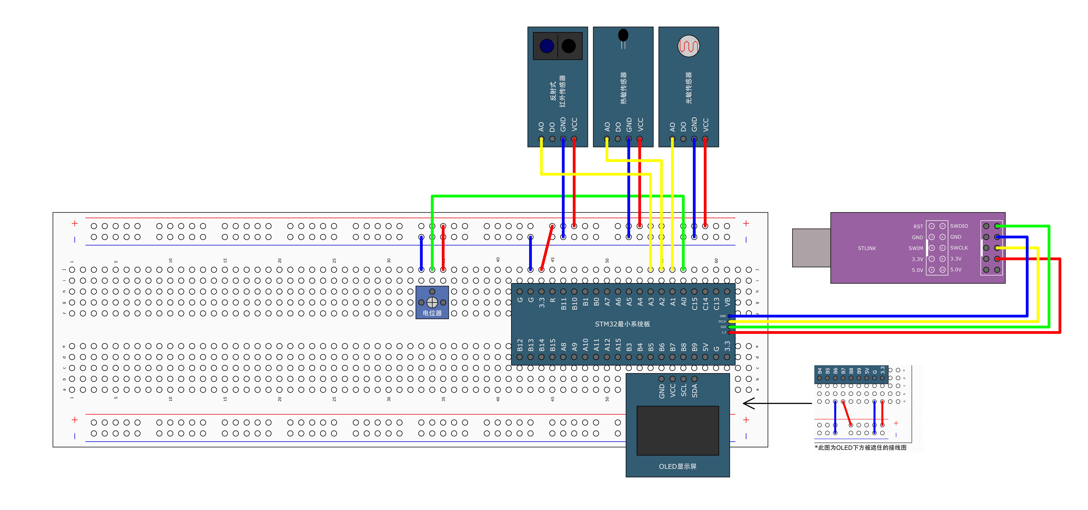
STM32标准库-ADC数模转换器
文章目录 一、ADC1.1简介1. 2逐次逼近型ADC1.3ADC框图1.4ADC基本结构1.4.1 信号 “上车点”:输入模块(GPIO、温度、V_REFINT)1.4.2 信号 “调度站”:多路开关1.4.3 信号 “加工厂”:ADC 转换器(规则组 注入…...
